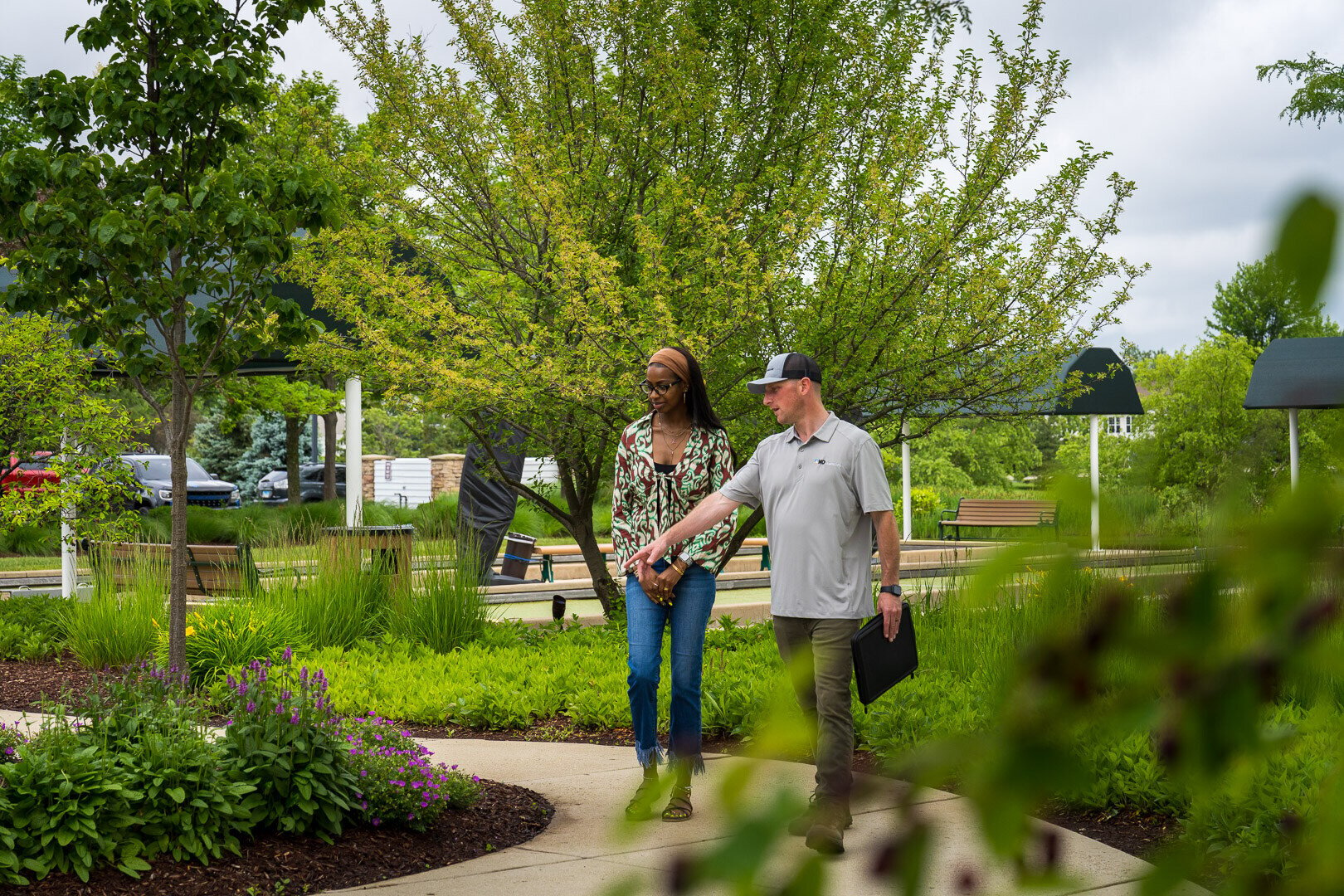Playgrounds and public spaces form the core of urban centers like Greater Chicago.
They influence neighborhood connections, encourage interaction with nature and others, and enhance the environment. Thoughtfully designed and maintained parks promote community belonging.
An accessible, comfortable, functional, and attractive public park landscape can significantly benefit a community. Incorporating kid-friendly design is a key aspect of this.
You might be curious about how to create a better, kid-friendly local landscape and what features make these spaces appealing enough for people to enjoy and revisit repeatedly.
/commercial%20playground%20aerial%202.jpg?width=1922&height=1080&name=commercial%20playground%20aerial%202.jpg)
Let’s dive into landscape design for parks and public spaces to help you better understand what these places require to deliver maximum impact and utility.
Who Can Design Public Parks Landscaping?
You might be wondering whether landscaping for playgrounds requires a certified landscape architect or whether a landscape designer can do the job.
In reality, the design of play spaces can involve multiple professionals, including architects, landscape designers, and engineers. Whether a licensed architect is required depends on the project's scope, complexity, and location.
Many municipalities allow landscape designers to manage smaller playground designs if the project meets local safety standards. Landscape designers can usually work on:
- Smaller parks, gardens, or playgrounds integrated with softscapes (grass, trees, paths).
- Natural play spaces that emphasize features such as climbing rocks, sand pits, or native plantings.
- Projects without significant structures (e.g., bridges, large shelters, or pavilions).
- Public parks with limited infrastructure focus on aesthetics, accessibility, and child-friendly landscapes.
- Larger or more complex projects involving structural elements often require a licensed architect or engineer. Some examples include:
- Playground equipment installations with custom or complex structures.
- Built infrastructure, like bridges, shelters, retaining walls, or drainage systems.
- Municipal or school district playgrounds, where local laws require a licensed architect to oversee the project for safety and liability.
- Projects with building permits: If the playground requires permits for structures, a licensed professional must often be involved in signing off on the plans.
A licensed landscape architect (not just a designer) can handle natural and built elements, making them suitable for larger public park landscaping. In some states or municipalities, only licensed landscape architects can legally design public play spaces to ensure compliance with safety codes.
In many cases, landscape designers work alongside architects or engineers to bring their expertise in plantings, pathways, and outdoor layouts. If the play space has softscapes and built structures, a collaborative approach ensures the aesthetic and structural components meet safety, accessibility, and durability standards.
What Unique Features Can Be Incorporated Into Landscape Design for Parks?
Public park landscaping offers a great opportunity to showcase creativity in design. For example, adding sensory and educational features can help your park stand out.
/commercial%20sculpture%20playground.jpg?width=1620&height=1080&name=commercial%20sculpture%20playground.jpg)
For example, sensory gardens can feature fragrant flowers like lavender or mint, as well as textural plants such as fountain grass, to stimulate touch and smell.
Plants that change with the seasons offer dynamic, year-round experiences. Incorporating interactive elements also appeals to children; for instance, small raised beds with edible plants like herbs, strawberries, or cherry tomatoes can teach gardening skills.
Additional features, such as wind chimes or musical stones, can add sound. Nature-based play areas vividly enhance park landscapes, using boulders, stumps, or fallen logs for climbing and balancing activities, or including splash pads and misting stations for safe water play.
Lastly, creating themed plant areas—such as tropical plants for a jungle atmosphere or pollinator gardens with bees and butterflies—can encourage greater park use.
What kind of safety considerations are important when landscaping Public spaces?
Safety is vital in public park landscaping.
When KD Landscape designs and maintains play areas, it must adhere to multiple safety metrics and standards to ensure compliance, minimize liability, and provide a secure, enjoyable space for visitors.
/commercial%20patio%20and%20stairs%20with%20lawn%20and%20shade%20trees%20playground.jpg?width=1620&height=1080&name=commercial%20patio%20and%20stairs%20with%20lawn%20and%20shade%20trees%20playground.jpg)
These metrics focus on injury prevention, accessibility, and durability, following established guidelines from organizations like the Consumer Product Safety Commission (CPSC), ASTM International, and the Americans with Disabilities Act (ADA).
Some key areas of focus include:
- Surface selection and impact absorption in case of a fall.
- Equipment spacing and use zoning should ensure clearance around playground equipment and sufficient openings so children's heads or limbs can’t get accidentally stuck.
- Age-appropriate play areas with clear signage for each section.
- Accessibility for disabilities that meet ADA requirements.
- Non-toxic, durable materials that stand up in the heat and are weather-resistant are used.
- Routine inspections and maintenance metrics, so loose bolts or broken equipment can be repaired, vandalism managed, and standards upheld.
- Guardrail and barrier requirements.
Environmental safety considerations include proper drainage, shade structures (large trees like oaks or maples, pergolas, shade sails or trellises covered with climbing plants), and non-toxic or harmful plants in the surrounding landscaping. This includes incorporating windbreaks using evergreen shrubs or tall grasses.
/commercial%20playground%20with%20kids%20customers%206.jpg?width=1620&height=1080&name=commercial%20playground%20with%20kids%20customers%206.jpg)
A design that involves clear lines of sight for caregivers of children, such as choosing low shrubs or buffer zones that keep playgrounds insulated for nearby roads or parking lots.
KD Landscape Can Help You Elevate Your Landscaping for Playgrounds
Creating a well-loved, functional, and safe landscape design for parks can be tough.
However, KD Landscape has a broad skill set, a specialization in working in tough environments, and strategic design and maintenance plans to bring your vision to life.
Our proactive planning allows us to identify potential challenges—from plant diseases to drainage issues—before they become major problems. We have experience handling public contracts and adhering to safety standards, ADA compliance, and stormwater management guidelines.
Our team has a history of following through on commitments, consistently delivering high-quality results on time and within budget, ensuring long-term client satisfaction.
Want to learn more about commercial landscape design and maintenance in Greater Chicago? Get started today with a free quote. We’ll review your options together so you can make a great choice.








